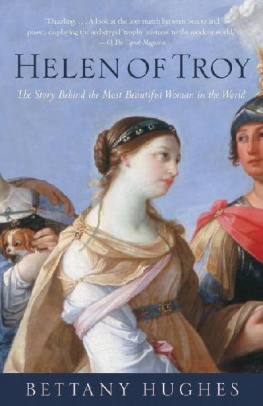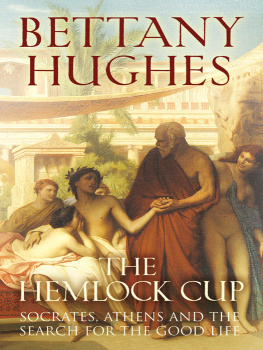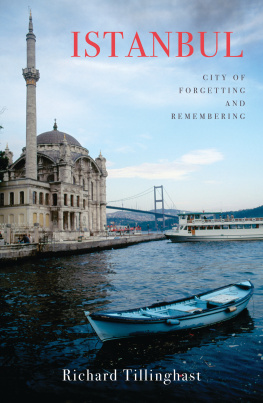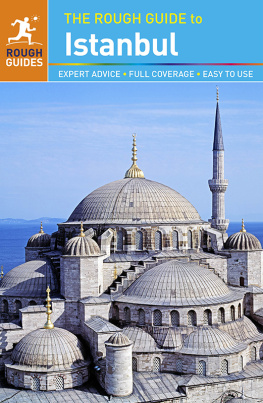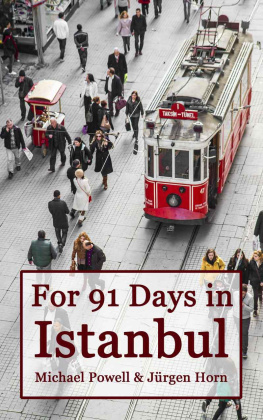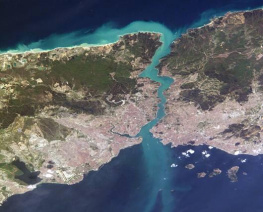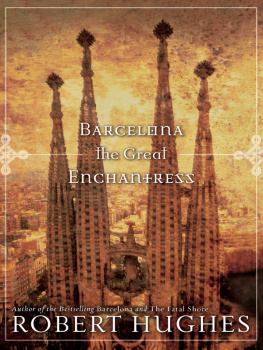Bettany Hughes - Istanbul: A Tale of Three Cities
Here you can read online Bettany Hughes - Istanbul: A Tale of Three Cities full text of the book (entire story) in english for free. Download pdf and epub, get meaning, cover and reviews about this ebook. City: London, year: 2017, publisher: W&N, genre: History. Description of the work, (preface) as well as reviews are available. Best literature library LitArk.com created for fans of good reading and offers a wide selection of genres:
Romance novel
Science fiction
Adventure
Detective
Science
History
Home and family
Prose
Art
Politics
Computer
Non-fiction
Religion
Business
Children
Humor
Choose a favorite category and find really read worthwhile books. Enjoy immersion in the world of imagination, feel the emotions of the characters or learn something new for yourself, make an fascinating discovery.

- Book:Istanbul: A Tale of Three Cities
- Author:
- Publisher:W&N
- Genre:
- Year:2017
- City:London
- Rating:5 / 5
- Favourites:Add to favourites
- Your mark:
- 100
- 1
- 2
- 3
- 4
- 5
Istanbul: A Tale of Three Cities: summary, description and annotation
We offer to read an annotation, description, summary or preface (depends on what the author of the book "Istanbul: A Tale of Three Cities" wrote himself). If you haven't found the necessary information about the book — write in the comments, we will try to find it.
Istanbul: A Tale of Three Cities — read online for free the complete book (whole text) full work
Below is the text of the book, divided by pages. System saving the place of the last page read, allows you to conveniently read the book "Istanbul: A Tale of Three Cities" online for free, without having to search again every time where you left off. Put a bookmark, and you can go to the page where you finished reading at any time.
Font size:
Interval:
Bookmark:
ISTANBUL
A Tale of Three Cities
BETTANY
HUGHES

For Jane and Karl who sustain me body and soul.
For Robin Lane Fox who gave me hope.
And for those who can no longer walk the streets of Istanbul.
CONTENTS

A diamond mounted between two sapphires and two emeralds the precious stone in the ring of a vast dominion which embraced the entire world.
THE DREAM OF OSMAN, C. AD 1280
Those who had never seen Constantinople before gazed very intently at the city, never having imagined there could be such a place in the world.
GEOFFREY DE VILLEHARDOUIN, FOURTH CRUSADE, AD 1204
If one had but a single glance to give the world, one should gaze on Istanbul.
ALPHONSE DE LAMARTINE, POET, WRITER AND STATESMAN AD 17901869
O, my God! Let this town flourish to the end of time.
SULTAN MURAD IV, AD 1638

PLATE SECTIONS

SECTION ONE
SECTION TWO
SECTION THREE
MAPS

Designed by Jamie Whyte

AD 632718
(10100 IN THE ISLAMIC CALENDAR)
Verily you shall conquer Constantinople. What a wonderful leader will he be, and what a wonderful army shall that army be!
TRADITIONAL HADITH ASSERTING THE PROPHET MUHAMMADS DESIRE TO CONQUER CONSTANTINOPLE
The wind of death grabbed them The Romans were besieged, but the Arabs were no better than them. The hunger oppressed them so much that they were eating the corpses of the dead, each others faeces and filth. They were forced to exterminate themselves, so they could eat. One modius of wheat was worth then ten denarii. They were looking for small rocks, they were eating them to satisfy their hunger. They ate rubbish from their ships.
MICHAEL THE SYRIAN, SIEGE OF CONSTANTINOPLE, AD 717
We do not know the name of the messenger but we live with the fallout of his message.
The Byzantine Emperor Constans II was a twenty-five-year-old ruler in his capital city of Constantinople in the high summer of the seventh century AD.least to the citys celebrated foundation by sailors from mainland Greece 1,400 years before, Constans sailed out from his glittering, gold-domed city, praying that this would be a ritual humiliation for his Muslim foe.
Yet within just a day of fighting Constans would be the one degraded jumping overboard dressed as a common sailor and crouching on the deck of a regular boat, desperately fleeing the slaughter between modern-day Cyprus and Turkey. forced hand-to-hand fighting as Byzantine and Arab vessels were roped together. And, disconcertingly for Christian Constantinople, against all the odds, it was the followers of Muhammad that won.
For a fat half-century the city of Constantinople, credited as Gods earthly home, would find herself both physically and psychologically besieged. This was a city that believed she was divinely favoured and that she would remain unconquered until the end of the world. Just a century before this New Rome, the wealthiest city on earth, had been the Christian capital of an empire of a million square miles. The people of Constantinople had such faith in their protector the Virgin Mary that the Mother of God would come to be called the citys commander in chief.
Fleeing the scene of the battle, the Byzantine Emperor Constans had returned first to Constantinople, but eventually travelled on to the security of Sicily, leaving his mother city exposed. Those abandoned in the historic centre of the city itself, above what had once been an ancient Greek acropolis looking out over the Sea of Marmara, or sitting scattered along the shores of the Bosphorus and the Golden Horn, offered nothing like a united front. To some, Arab conquest seemed a certainty. Within just a few years of the Prophet Muhammads death in AD 632 (year 10/11 in the Islamic calendar), Muslims had looked set to rule much of the known world. In 632 Arab forces had conquered Byzantine Syria, in 636 a Byzantine army was beaten back in Yarmuk, in 640 the capture of Heliopolis had allowed for progress into Byzantine Egypt, in 641 Alexandria had fallen, in 642/3 Tripoli was captured, and now this advance nudging north. If events had followed what seemed to be their natural course, Istanbul would have become the seat of caliphs fifteen centuries ago.
But immediately after the Battle of the Masts there was a lull. The In Constantinople life continued, if a little anxiously. Many left the city, unsure whether she could feed or protect them. The imperial dynasty had recently introduced a mutilating form of punishment rhinotomy when the noses of disgraced emperors would be split (and the tongues of their wives). The golden nose-cover would become a feature of the Byzantine imperial palace and of places of exile. In outlying territories Byzantine populations hunkered down in fortified settlements such as Monemvasia in the Peloponnese, or physically buried themselves, their homes, their churches and their granaries into the soft rock in Cappadocia, Asia Minor. Emperor Constans had even tried to move the capital to Syracuse in Sicily.
The anxiety was justified: first in AD 667 Fresh analysis of the Syriac and Muslim sources suggests that we should think of these early Arab aggressions as nagging incursions, rather than as a full-blown and consistent strategy of besiegement.
In AD 717 all that would change.
Defeated by Constantinoples walls and by her cutting-edge weapons, but never taking their eyes off the prize, in AD 717 (year 9899 in the Islamic calendar) Muslim armies returned. The Arabs had secured a base on Gibraltar in 711, footfall to much of the Iberian peninsula. Swathes of the Middle East and North Africa, and the edge of Europe, were theirs. Now Meanwhile, buoyed up by an eschatological vision that a ruler bearing the name of a prophet (Sleyman is the Arabic equivalent of Solomon) would take the city the attacking army made up predominantly of Arabs and Berbers stockpiled vast resources and arms, including naphtha, and jerry-built their own siege walls of mud around Constantinople, isolating those within from their allies.
Yet the Arab plan had an Achilles heel: the seaward sides of the city could not be blockaded by their fleet. First that preposterous Greek Fire its use directed from the walls of Constantinople by the Emperor himself and then the convenient defection of a number of Christian Coptic Egyptians on the Muslim ships meant that supplies, men and morale could keep scuttling into the city under the cover of darkness from that squid-black sea. The treacherous currents in the Bosphorus snared Muslim relief ships sailing up from the Sea of Marmara. The Arabs own destruction of the surrounding countryside had left the invaders with no food of their own; famine, fear and disease worked its way systematically through their camps. A severe winter, when the earth was white with snow, saw not besieged but besiegers eating pack-animals, possibly even turning to cannibalism.
Finally on the Feast of Dormition, 15 August AD 718, the Arab commander ordered the retreat. Constantinoples protector, Mary the Mother of God, whose image had been paraded around the walls, was credited with victory. Realising that they had the upper hand, the exhausted Constantinopolitans rallied to attack the retreating enemy one last time many Muslims drowned, others were harassed by Bulgars. The troops that survived limped their way back to allied territories and then home.
Next pageFont size:
Interval:
Bookmark:
Similar books «Istanbul: A Tale of Three Cities»
Look at similar books to Istanbul: A Tale of Three Cities. We have selected literature similar in name and meaning in the hope of providing readers with more options to find new, interesting, not yet read works.
Discussion, reviews of the book Istanbul: A Tale of Three Cities and just readers' own opinions. Leave your comments, write what you think about the work, its meaning or the main characters. Specify what exactly you liked and what you didn't like, and why you think so.

